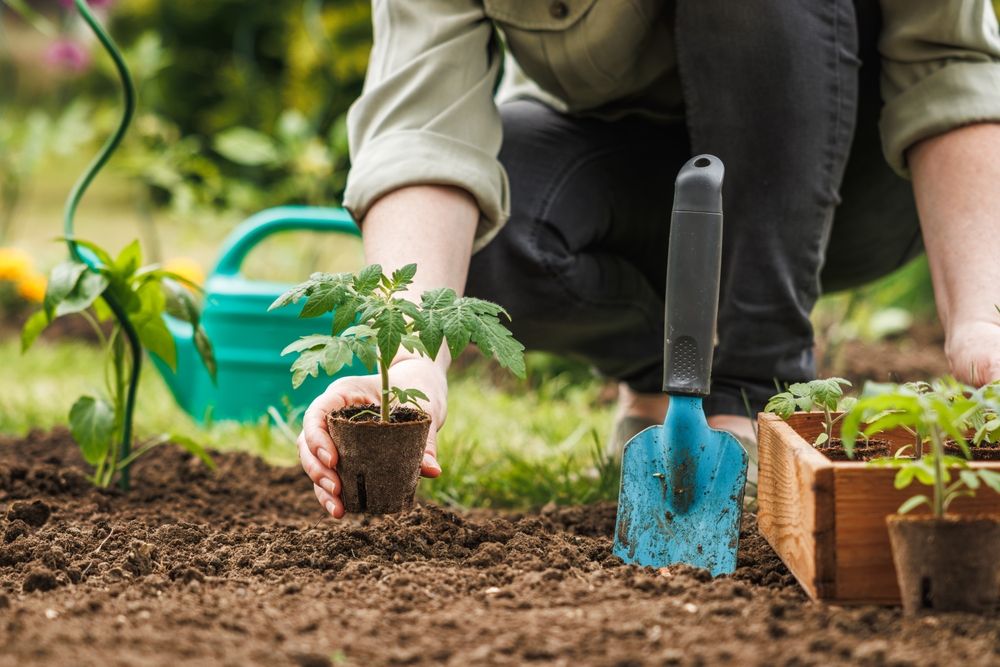Creating a thriving backyard garden on a budget is not only possible but can also be a highly rewarding venture. By approaching gardening with an eye towards sustainability and cost-effectiveness, you can design a beautiful oasis that provides both aesthetic and practical benefits without significantly impacting your wallet.
Plan Before You Plant
Before diving into planting, take some time to plan your garden. Consider factors such as the local climate, the amount of sunlight your yard receives, and the types of plants that thrive in your area. By planning ahead, you can avoid costly mistakes like buying plants that won’t survive your specific conditions.
Start by sketching a garden layout that includes different zones for various plant types based on their sunlight and water needs. Be mindful of the mature size of your plants — this will help prevent overcrowding and reduce the need for future transplanting.
Choose Perennials Over Annuals
While annuals can offer a quick burst of color, they need to be replanted each year, which can add up in costs. Instead, focus on perennials that will return year after year, providing ongoing beauty and minimizing seasonal replanting costs. Many perennials are also more resilient and require less care than annuals, which reduces maintenance efforts and associated expenses.
Start from Seeds
Purchasing fully grown plants is convenient but can be expensive. Starting your garden from seeds is a far more economical approach. Seed packets are generally inexpensive and available in a wide range of varieties. Starting seeds indoors during the final weeks of cooler weather allows for an early start to the growing season.
Use recycled containers, like old egg cartons or yogurt cups, to sow your seeds. These containers are perfect for seed starting and can be planted directly into the ground once the seedlings are strong enough, helping to cut costs further.
Composting: Nature’s Way to Fertilize
Creating your own compost is a cost-effective way to enrich the soil in your garden. Instead of purchasing chemical fertilizers or compost, turn kitchen scraps, grass clippings, and leaves into rich, organic matter that will nourish your plants. A simple compost bin can be created from spare wood or wire mesh, keeping costs to a minimum.
Composting reduces waste and improves soil structure, enhancing your garden’s productivity without the need for expensive soil amendments. Be sure to maintain a proper balance of green (nitrogen-rich) and brown (carbon-rich) materials to foster efficient decomposition.
DIY Garden Tools and Accessories
Consider making your own garden tools and accessories instead of purchasing them new. Old utensils can be turned into labels, and repurposing items such as wooden pallets into planters or garden furniture can offer significant savings. With a little creativity, even broken tools can be modified and used for other purposes in the garden.
Additionally, thrift stores and garage sales are excellent sources for inexpensive gardening tools. Often, these places have gently used tools at a fraction of the cost of new ones and are worth exploring for budget-conscious gardeners.
Collect Rainwater
Watering can quickly become a significant expense over time, especially in areas prone to drought. Collecting rainwater is an eco-friendly and economical solution. Install a rain barrel connected to your gutter downspouts to collect and store rainwater for use during dry periods. This harvested rainwater can be employed for watering your garden, reducing dependency on municipal water supplies and keeping costs low.
Mulching: The Silent Saver
Mulching is an excellent way to save money and improve your garden’s health. It helps retain soil moisture, suppress weeds, and enrich the soil as it decomposes. Instead of buying mulch, generate it yourself using grass clippings, straw, shredded leaves, or wood chips.
If you have fallen branches or twigs in your yard, consider renting or borrowing a chipper to create your own mulch, which will save on purchasing costs and promote sustainability.
Smart Plant Grouping
Group plants with similar needs together. This practice, known as companion planting, allows more efficient use of resources. For example, plant moisture-loving vegetables together in one section of your garden, while drought-resistant plants can be grouped in another. This strategic planting conserves water and ensures plant health by meeting the specific needs of each plant group consistently.
Propagate From Cuttings
If you or your neighbors have gardens with thriving plants, propagation is a cost-effective method for expanding your plant varieties. Taking cuttings from existing plants you admire and regrowing them in your garden allows you to enjoy the plant without buying a new one. Increase the number and variety of plants at no cost, and it can be a fun and engaging way to connect with nearby gardeners.
Many plants are easily propagated, including succulents, herbs, and several perennial flowers. Online tutorials can guide you through the process if you’re new to the technique.
Cut Costs on Pest Control
Chemical pesticides can be costly and harmful to the environment. Instead, employ natural pest control methods such as introducing beneficial insects like ladybugs or lacewings, which feed on common garden pests. Encourage birds by installing birdhouses or baths — they naturally control insect populations.
Additionally, homemade repellents using ingredients like garlic, neem oil, or chili peppers can deter pests without the expense of commercial chemicals. Ensure a healthy balance in your garden by rotating crops and practicing good garden hygiene to prevent pest buildup over time.
Make the Most of Vertical Space
If space in your garden is limited or you want to reduce the amount of soil and water required, consider vertical gardening techniques. Use trellises, hanging pots, and upcycled containers to grow upwards. This not only maximizes your gardening area but also saves costs by requiring fewer resources compared to traditional ground planting.
For example, inexpensive materials such as wooden pallets or reused plastic bottles can create wonderful vertical gardens that are good for growing herbs, small vegetables, or flowers.
Community and Knowledge Sharing
Join local gardening clubs or online communities where you can trade seeds, plants, and ideas with fellow enthusiasts. Such exchanges foster community spirit and provide access to a broader range of plant varieties and gardening knowledge without monetary exchange.
Networking with local gardeners can also lead to shared purchases on expensive items like tools or bulk soil orders, reducing costs for everyone involved.
Edible Gardens as Multipurpose Beautifiers
Integrate edible plants into your garden to not only beautify but also feed your household. Herbs, vegetables, and fruit-bearing plants provide fresh produce, reducing grocery bills. Select plant varieties that are suited to your climate and cooking preferences to maximize your harvests and cut costs effectively.
Starting with easy-to-grow staples like tomatoes, peppers, and lettuce will quickly yield bountiful results with minimal investment, offering both nourishment and aesthetic appeal.
By approaching backyard gardening with innovation and resourcefulness, you can cultivate a stunning and sustainable garden environment without breaking the bank. With these budget-friendly tips, achieving a productive and visually captivating garden is not only a frugal pursuit but also a deeply satisfying one.



